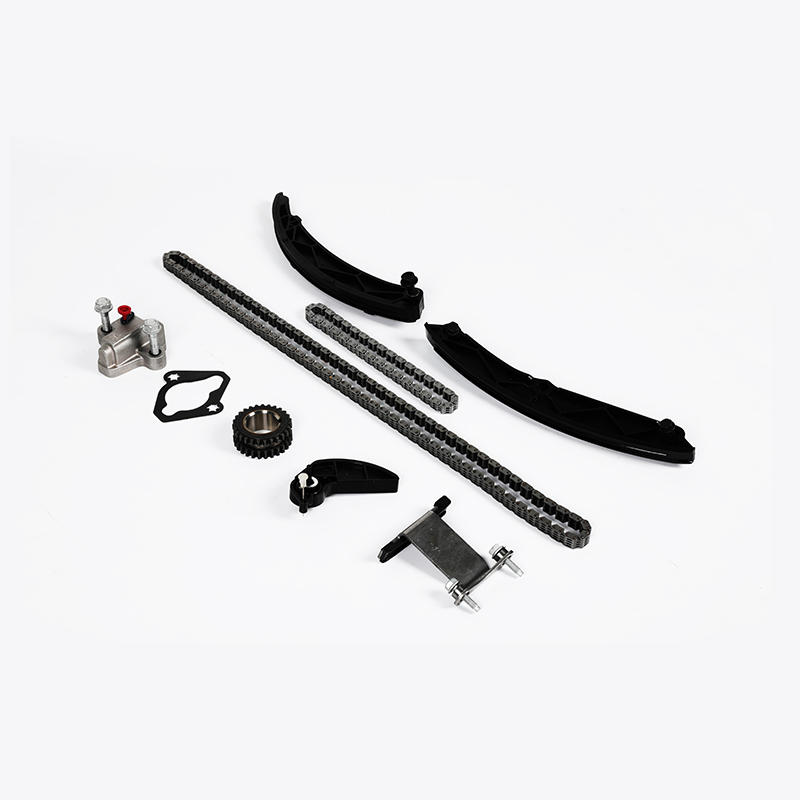Lastest News
-
 May 16, 2024
May 16, 2024
 By admin
By admin
How does the camshaft phase adjuster achieve precise control of valve timing?
How does the camshaft phase adjuster achieve precise control of valve timing? What techniques or mechanisms does it employ to ensure accuracy? The cam...
View More >> -
 May 09, 2024
May 09, 2024
 By admin
By admin
What durability testing standards does the Car Engine Timing Chain Kit follow during the design and production process?
What durability testing standards does the Car Engine Timing Chain Kit follow during the design and production process? How do these testing standards...
View More >> -
 May 02, 2024
May 02, 2024
 By admin
By admin
How does the new timing chain tensioner perform in terms of durability?
When we look at the durability performance of the new timing chain tensioner, the first thing to consider is the design and material composition of th...
View More >> -
 Apr 25, 2024
Apr 25, 2024
 By admin
By admin
Striking the Balance: Considerations in Designing and Selecting Car Engine Timing Chain Tensioners
Car Engine Timing Chain Tensioners, as vital components within an engine's timing system, undergo meticulous considerations in their design and select...
View More >>
INDUSTRY KNOWLEDGE
About The Timing Sprocket
A timing sprocket, also known as a camshaft sprocket or crankshaft sprocket, is a toothed wheel that connects the timing chain to the camshaft or crankshaft. The timing sprocket is responsible for maintaining the proper alignment between the camshaft and the crankshaft and ensuring that the engine's valves and pistons operate in synchronization.
The timing sprocket is typically made of high-strength metal and is mounted on the end of the camshaft or crankshaft. It has teeth that mesh with the timing chain, transferring the rotational energy from the crankshaft to the camshaft and controlling the engine's valve timing. The teeth on the timing sprocket are precisely positioned to ensure that the engine's valves and pistons operate in synchronization, providing optimal engine performance and efficiency.
Timing sprockets can wear over time due to high heat, stress, or other factors, leading to engine issues such as noise, reduced power, or engine misfires. A worn or damaged timing sprocket can cause the timing chain to become loose or misaligned, resulting in engine damage if not addressed promptly.
Regular inspection and maintenance of the timing sprocket can help prevent engine issues and ensure that the engine runs smoothly and efficiently. If a timing sprocket becomes worn or damaged, it should be replaced promptly to avoid potential engine damage.
The Role of Timing Sprocket
The timing sprocket plays a crucial role in the engine's timing system. It is responsible for maintaining the proper alignment between the camshaft and the crankshaft, which ensures that the engine's valves and pistons operate in synchronization.
The timing sprocket is connected to the camshaft or crankshaft and has teeth that mesh with the timing chain. As the crankshaft rotates, the timing sprocket transfers the rotational energy to the camshaft, controlling the engine's valve timing. The precise positioning of the teeth on the timing sprocket is critical to ensure that the engine's valves and pistons operate in synchronization, providing optimal engine performance and efficiency.
The timing sprocket also plays a role in controlling the engine's valve timing. By adjusting the position of the timing sprocket, the engine's valve timing can be advanced or retarded, allowing for improved engine performance and efficiency under different operating conditions.
A worn or damaged timing sprocket can cause the timing chain to become loose or misaligned, resulting in engine damage or failure. Regular inspection and maintenance of the timing sprocket can help prevent engine issues and ensure that the engine runs smoothly and efficiently. If a timing sprocket becomes worn or damaged, it should be replaced promptly to avoid potential engine damage.

 English
English  русский
русский




.jpg?imageView2/2/format/jp2)
.jpg?imageView2/2/format/jp2)
.jpg?imageView2/2/format/jp2)
.jpg?imageView2/2/format/jp2)
.jpg?imageView2/2/format/jp2)
.jpg?imageView2/2/format/jp2)
.jpg?imageView2/2/format/jp2)
.jpg?imageView2/2/format/jp2)
.jpg?imageView2/2/format/jp2)

.jpg?imageView2/2/format/jp2)








